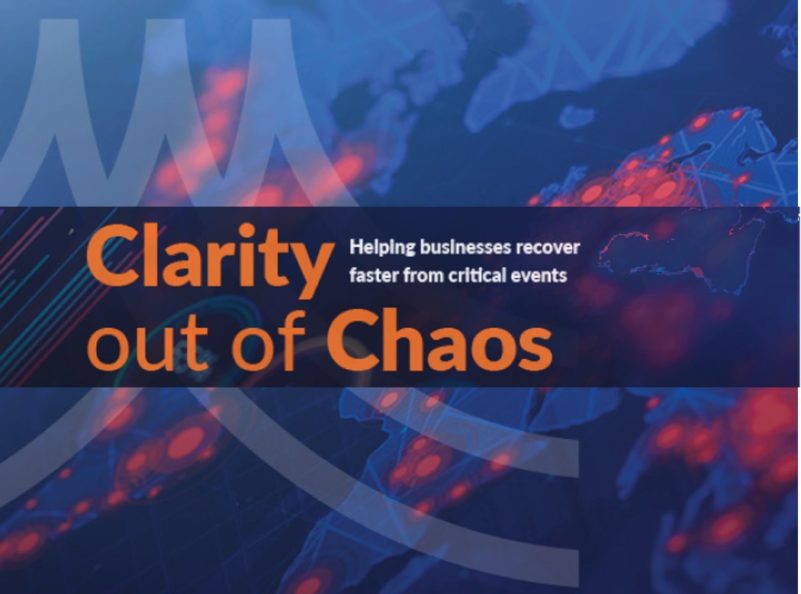
The discussion around the value of Critical Event Management for any organisation as well as the basics steps to take to put in place a successful critical event management plan and how that can be applied in situations like the global crisis we are facing now is of the utmost importance.

OpenGov had the opportunity to speak with Tom Pressley – Vice President International Marketing, Everbridge.
Everbridge’s mission is to keep people safe and help organisations avoid, reduce the impact of, and recover from disruption to operations when a critical event occurs.
The interaction focused on how current events such as COVID-19 or even the Australian bushfires have made Critical Event Management a priority for leadership in Governments and Businesses today.
Critical Event Management is an essential tool for future planning and business continuity but what is equally important is how that planning is communicated internally.
Research shows gaps in Communication in Critical Event Management
Everbridge recently conducted a survey of 9003 employees across 13 markets to explore how current trends and habits of communication can impact the success of a Critical Event Management (CEM) plan: What kind of communication is in place today from employers and governments? What are the preferred methods for communication? What is the level of trust and reliability for each of these channels? How best to implement and improve an organisation’s CEM plan?
Improving Communication to Successfully execute Critical Event Management plans
Most of the current industry research focuses on how these plans have been implemented and activated.
Everbridge recognised there was a gap and a need to understand how organisations could improve communications further to accelerate business recovery efforts. They wanted to explore the perception of the employees, use their insights to create a holistic picture of how the industry could improve, especially after the volatility of the past year.
Through this research, they found five prevalent themes: Employees are more disparate and diverse than ever. Targeted communications outweigh privacy and security concerns. Businesses are missing critical channels of communication. Employees expect more information; more often, the business can be the single point of truth for Critical Event Management.
How Employees Trust Employer Communication
“The survey painted quite an interesting picture. To summarise, it showed that people would look first and foremost to a government message but, on a secondary level, people don’t necessarily trust governments to look after their personal data. In fact, they would put their trust in an employer to look after their personal data and their personal information and contact details.”
The survey helped show how communication, when carried out in a clear manner, can activate employees in the organisation to help speed up the recovery through particular events.
“The report also showed that businesses haven’t really considered what is going to activate their employees to get them to do what is needed, at the time it needs to be done – because this will ultimately help recovery in a much more efficient manner.”
The report highlights the fact that a critical event management plan cannot be looked at in isolation. It is not just about having a communication mechanism. It’s about getting insights to help the organisation be more productive with the two key pillars – prescriptiveness and predictability.
Critical Event Management is an ongoing priority
 “Going through this piece of research, the timeline (in the image above) is extremely interesting, especially from the perspective of foreign and international business that have offices in cities across the world. The slide demonstrates and highlights that, almost certainly, such businesses will have to deal with something somewhere every year.”
“Going through this piece of research, the timeline (in the image above) is extremely interesting, especially from the perspective of foreign and international business that have offices in cities across the world. The slide demonstrates and highlights that, almost certainly, such businesses will have to deal with something somewhere every year.”
“A global business leader looking at this slide will be driven to get something in place. Leaders are talking about what happens post COVID-19, but bushfires are also a 2020 issue. This sort of impact is not just going to go away.”
Everbridge wants to try and highlight that; not just in terms of an incident timeline but what these incidents cost. The cost from a global economy perspective coupled up the individual costs from things like GDP.
The report concludes that although many organisations are starting to implement a CEM plan, most efforts are still quite immature. Lack of planning, hence lack of implementation, could lead to a longer, more expensive recovery.
“The reliability of any CEM is communication. Communication is as critical as the speed at which it’s communicated. The right approach is to have a flexible, multi-channel, dynamic plan, including frequent communications using the various channels depending on the impact and scope of the incident.”
















